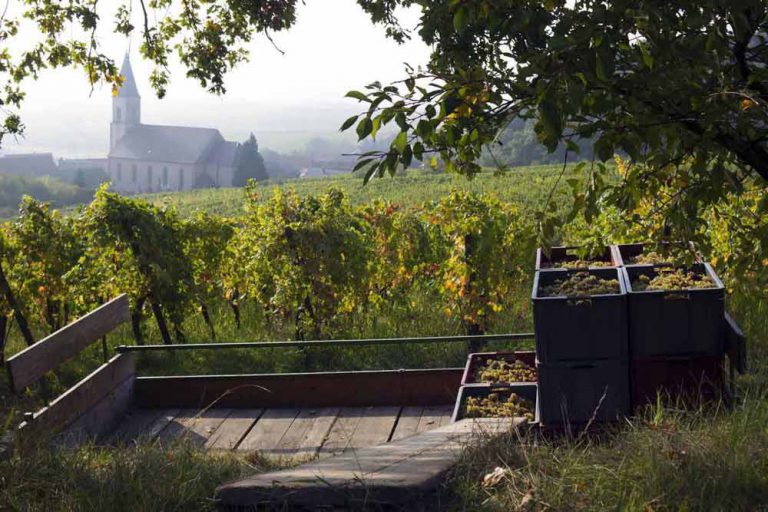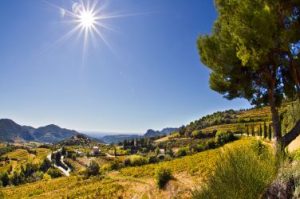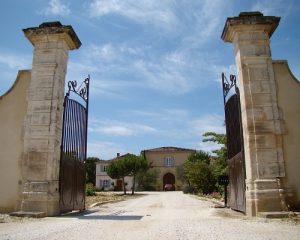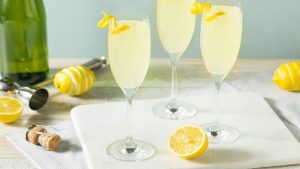
Established in Epfig (Lower Rhine), an ancient Roman village around 40 kilometres south of Strasbourg, Domaine Ostertag isn’t the oldest of Alsace’s estates, although it is one of its most prestigious. The Revue du vin de France has given it 3 stars out of 3. Its renown was built up over two generations, the third falling on Arthur who has taken up the reins with verve.
Domaine Ostertag is recent: Irma and Adolphe Ostertag founded it in 1966 with just 2,000 square metres on the Fronholz terroir. “We refer to Adolphe as the family pioneer, he’s the one who launched us into this!” At the time, Adolphe shared his time between the vineyard and the car, continuing in his job as a driving instructor in order to keep the family funds afloat. “My grandpa had the chance to purchase parcels that nobody else wanted; sloping vines on the hills, those that are the most interesting today.” Enthused by his work in the vines, he set out to really highlight the beauty of the terroirs, wanting the identity of each parcel to express itself in his wines.
“The cellar is yours!” Is what Adolphe Ostertag declared to his son André when the latter returned to the family domain in the 1980s. “My grandpa had less of an affinity for the cellar than my father, so he was trusted with the keys as soon as he came back, allowing him to develop his own style of wine.” This was when the domain’s identity really began to emerge, with the wines gaining much in quality, purity and elegance. The yield was mastered, the vineyard treated with more of an eye for detail, the harvest carried out by hand, with meticulous vinifications and some grapes matured in barrels. Everything was considered to produce wines as pure and accomplished as possible. In 1997, he converted the vineyard to organic growing (AB certification) then to biodynamics, though this without an official certificate.
André Ostertag and his wife Christine Colin are both artists and have supported each other in this endeavour to the point of making Domaine Ostertag into a place where art and wine coexist. André is quite a poetic man with a close relationship to nature, but he is also a rigorous wine maker who knows what it takes to stay on top of things. A huge fan of Riesling, he wrote these lines in his piece entitled ‘The Riesling Manifesto’ : “It’s as though the vine connects the high and the low, the sky and the earth, the shadow and the light. The vine unites these elements, with roots that push deep into the ground and branches that reach for the celestial realm. Then there’s the sap that flows around and around, receiving elements from one body and delivering them to another. The vine is what links the furthest heights and the deepest lows, a bridge of sorts to welcome exchange. And its fruit, the grape, is the living souvenir of this exchange. As for the wine, it is no more or less than the transmutation of the fruit.” And if one day you get the chance to visit this Epfig domain, you might also want to drop by Christine’s workshop. She is a talented painter and sculptor whose work is clearly inspired by the shape of the grape and the lustre of wine. It is also thanks to her that the labels placed on the bottles are so magnificent, each one different and illustrating the unique identity of each cuvée.
Arthur arrived at the domain in 2015 to be trained, before officially taking over in 2018 when his father retired. Born in Strasbourg, he is a self-described “city child”. “As a child, I lived in Strasbourg, so I was far away from the vines where my dad worked. It took me quite some time to fully understood what he was doing and decided to go down the business school route.” During his degree, he took a trip to New Zealand to see what it would be like to live abroad. Here, he met James Hilton, a wine maker who spoke to him about the vine as a kind of energy, a way of working that gets to the heart of the plant and the person who cultivates it. Upon his return to France, it was decided: he left his business school to pursue a viticulture and oenology diploma in Beaune. He then undertook an apprenticeship with Comtes Lafon in Meursault.
The domain now covers 15 hectares, all of which are treated biodynamically. “I don’t believe in following strict rules. The living environment will always surprise us, and it isn’t up to the vine or the climate to adapt to us, but rather up to us understand the vine. We can be committed to a certain way of working in the vines, but we’re surprised every day by what happens.” Arthur’s approach in the vineyard is led entirely by his senses, and he is always listening, observing the smallest elements and reactions in the plants. One of Domaine Ostertag’s strengths is found in this creative freedom: the history of the domain is recent enough for each of its new faces to bring their own character without fearing change. They can develop their work without the weight of tradition.
Arthur works alongside 2 others in the office and 4 in the vineyard. The vines are entirely debudded and they are making an effort to use the tractor less often. “In the space of three years, I’ve reduced the use of machinery in the vineyards by 35% and I’m proud of this.” The goal is to prepare the soil as well as possible to cope with increasingly extreme weather conditions. Ostertag already makes use of horses that are borrowed for working the soil, but the long-term aim is to have one permanently on site: “this is a project I’d like everyone to be involved in so that it can be a central part of how the domain functions.” The most important principle is the growing of the best grapes, always the sign of a good wine. After harvesting, the pressing is long and gentle in order to preserve the finesse of the fruit. The vinification and fermentation processes are also long, lasting around 8-15 months. All of the Pinots (Blanc, Gris and Noir) are vinified in Burgundian barrels, some of them for over 13 years, with Arthur tending to steer clear of new wood. Sulphur is used in minimal quantities (2 grams) at the bottling stage, though only depending on the needs of each individual cuvée. Some of the wines are natural, and Arthur also carries our maturations in amphora. All of these efforts have led to the production of remarkable wines that make Domaine Ostertag one of the most prestigious estates in Alsace.
Discover all the wines from Domaine Ostertag for sale at iDealwine
What do the guides say?
A faultless score from the Revue du vin de France: “2018 saw a new era for the domain with the arrival of Arthur, André Ostertag’s son. With as heightened a sense for white wine as his father, he brought his own touch to the range, notably seeking to make progress on red production. The family cultivates parcels on the terroirs of Zellberg and Fronholz, on the Muenchberg grand cru, without forgetting Clos Mathis in Ribeauvillé. Fans of Alsace absolutely need to get to know this domain, whose magical wines are immensely pleasing. The ageing capacity of the whole range is undeniable, though the fruit is accessible in the Jardins range, for example. This is the result, no doubt, of a vineyard that has been grown biodynamically for 20 years, rounded off with a precise and pure vinification.”



